. . . Thanks To Two Brave Men, With a Rock and a .44 Special
The Dallas Junior Chamber of Commerce (DJCC) is an organization of young professionals who are engaged in networking and community involvement. They have supported the city through numerous events and activities, since 1918.
One of the Chamber’s activities is especially dear to law enforcement and the law-abiding citizens they serve, because it memorializes the February 7, 1951 line-of-duty death of Dallas Police Department Officer Willis Wood “Johnny” Sides, who was slain just 21 days after graduating from the police academy, as fifth in his class.
Editor’s Note: We’re proud to welcome RevolverGuy, and ace law enforcement historian, Tony Perrin back to our pages with another story about the men who used revolvers to keep the peace in their community, back when the round gun was King. The greater story of the revolver is about more than the technology, of course, and Tony’s latest tale provides a wealth of human lessons for all of us to pay attention to, as armed defenders. Thanks Tony! Enjoy, everybody!
-Mike
Recognition
In the long-established tradition of American military, fire service, and law enforcement organizations, the Chamber established an annual award which pays tribute to the fallen officer (and DJCC member), and recognizes those who continue to serve in an exemplary fashion. The Chamber’s Johnny Sides Award, honors the Dallas Police Department Rookie of the Year, and has been awarded each year since 1952.
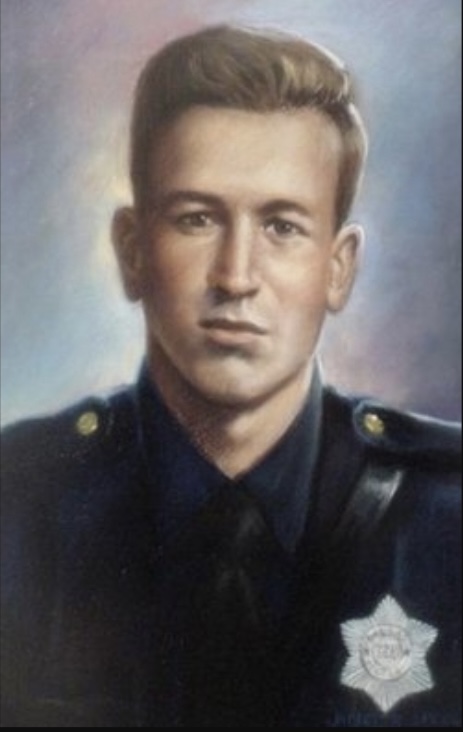
Good folks everywhere are grateful to the DJCC for remembering and honoring this young officer, who gave his all for the people he served. It’s especially important, in today’s anti-law enforcement environment, to remember the sacrifice of men like Officer Sides, and to recognize those still in uniform. It’s especially meaningful to the men and women of law enforcement, to see this kind of public support.
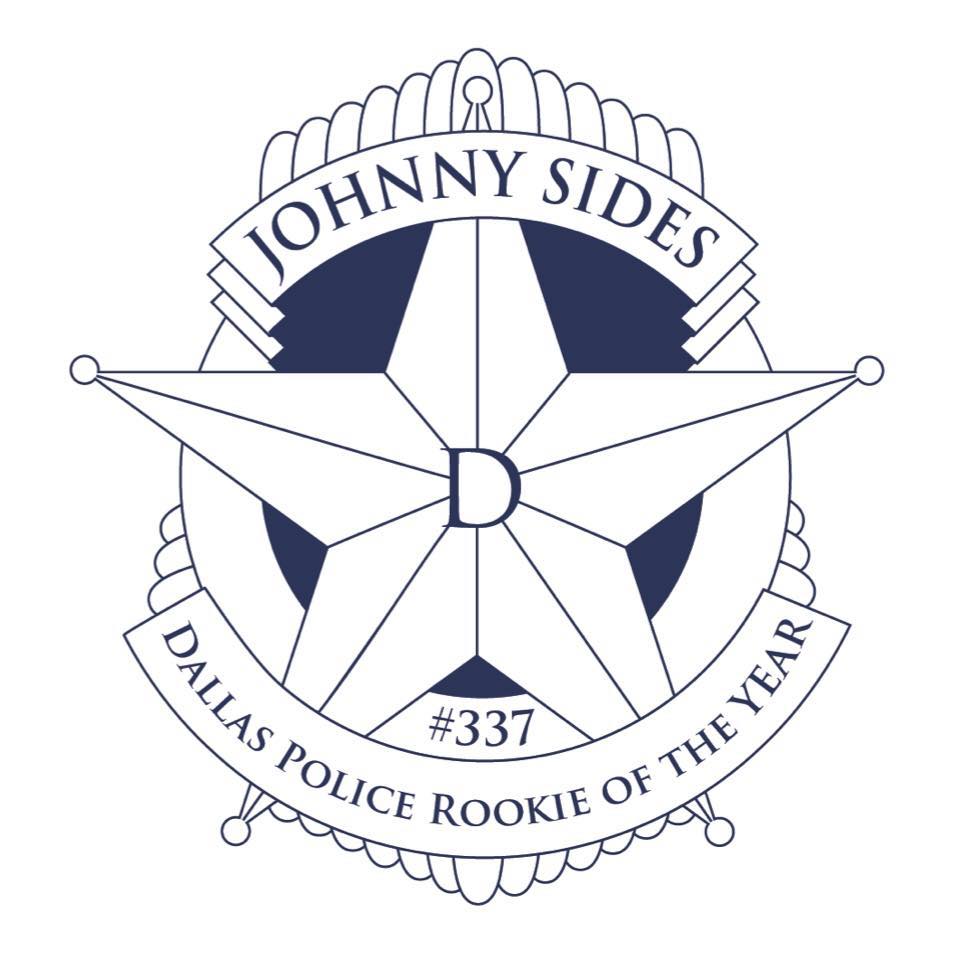
RevolverGuy is grateful for the efforts of the DJCC to memorialize Officer Sides and recognize officers that are currently serving, but there’s more to the story of Officer Sides’ death than just the annual award that’s presented in his name. In fact, Officer Sides’ murder was part of a larger story, which provides significant lessons for all of us to consider.
The First Act: Attempted Murder
The earliest segment of the story begins in Mississippi on December 2, 1950. On that date, Trooper E. J. Grisham stopped a stolen vehicle near Vicksburg. He placed the occupants under arrest, and, with one suspect in his vehicle, and the other being escorted in the stolen vehicle, he headed to the jail. Somewhere enroute, the trooper was shot in the neck, and left along the side of the road. His service revolver and shotgun were stolen by the criminals.1
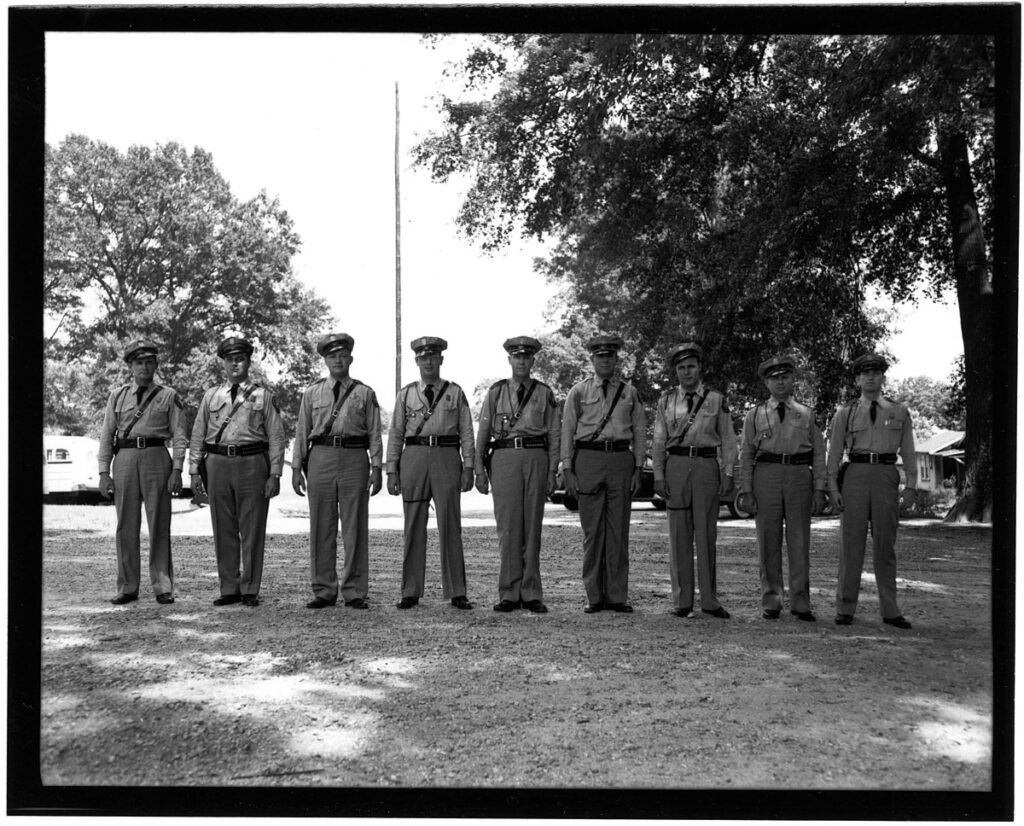
Trooper Grisham recovered from his neck wound and was able to finish out his career in the Identification and Investigation section of the Mississippi Highway Police.
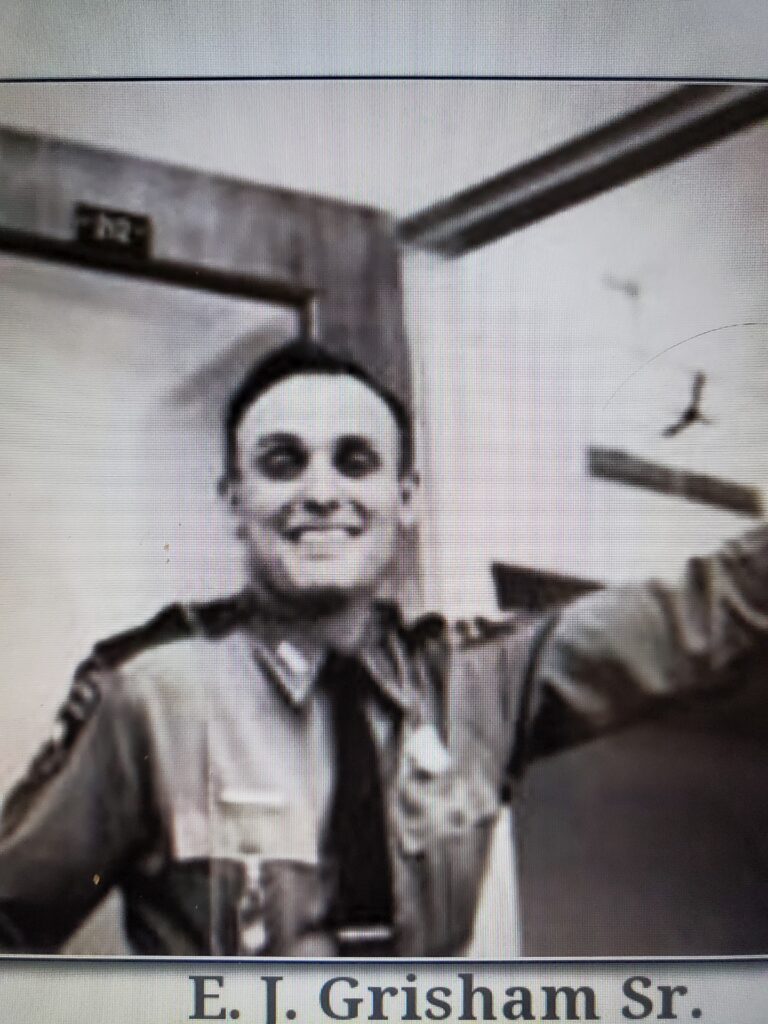
Trooper Grisham’s attackers would later be involved, along with two others, in another confrontation with police that would quickly turn deadly.
The Second Act: A “Routine Stop”
On Monday, January 22, 1951, Dallas Police Officer Johnny Sides, on his 21st day out of the academy, was on patrol with his partner, Harold L. Dawson. The officers observed a 1951 Oldsmobile, with four occupants, run a stop sign.
The Olds was pulled over and the officers approached, with Dawson on the driver’s side and Sides on the passenger side. Dawson ordered the two on his side to exit the car (these two were later identified as J. W. Johnson, the driver, and Bill Pomeroy, the driver’s side rear passenger). While the men were exiting the vehicle, Dawson spotted a rifle in the car and shouted a warning to his young partner, Sides.
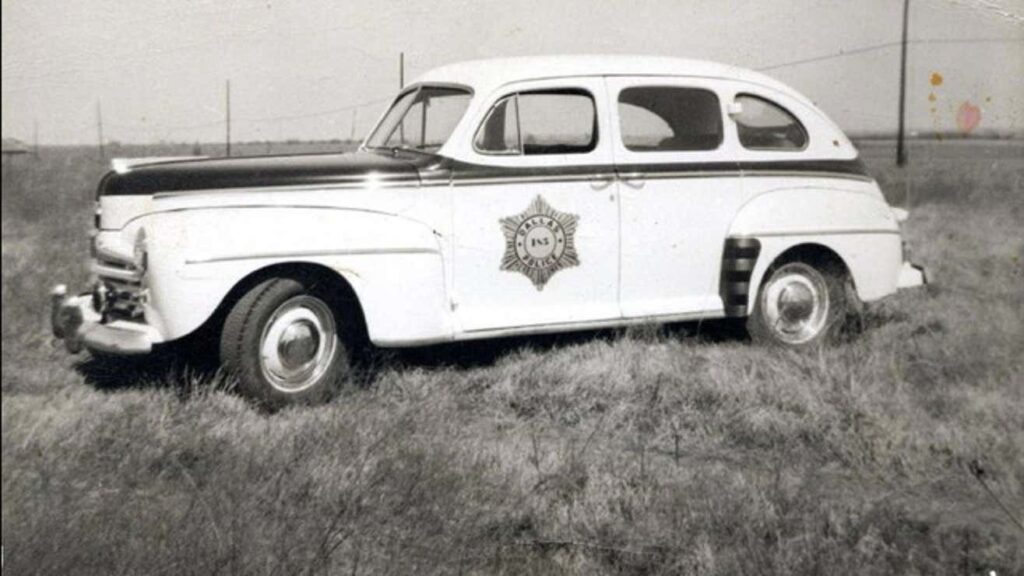
Marvin Johnson, occupying the right front seat, exited the vehicle and shot Sides in the stomach. J. W. Johnson then ran around the front of the Olds, firing two shots at Dawson, striking him in the left wrist and left shoulder. Officer Sides was able to draw his service revolver and return fire.
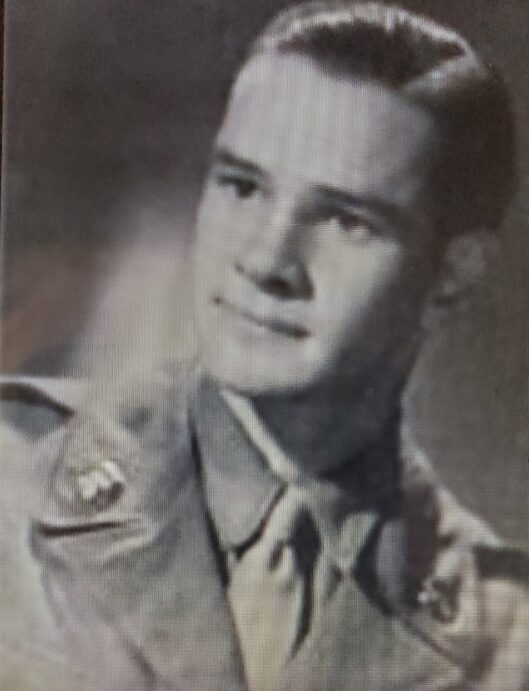
With both officers wounded, the four took off in their stolen vehicle. Both officers were rushed to the hospital. Johnny Sides lingered with the wound in his stomach until the 7th of February, when he died from the effect of the gunshot. Dawson, who had also been with the department less than a year, recovered from his wounds, returned to work, and retired in 1973. He had served with the 42nd Infantry Division (the “Rainbow Division”) during World War II.
Both officers were awarded the Police Cross.
The Final Act: Ozark Showdown
Hardy, Arkansas is a small town in the Ozark Mountains of north Arkansas, located on the beautiful Spring River. On Wednesday, January 24, 1951 Hardy had less than 800 residents and was a pretty quiet town. It included one of Sharp County’s two courthouses. Inside the courthouse was the newly-elected Sheriff of Sharp County, Guthrie Goodwin, who was getting settled into the new job on his 24th day in office.
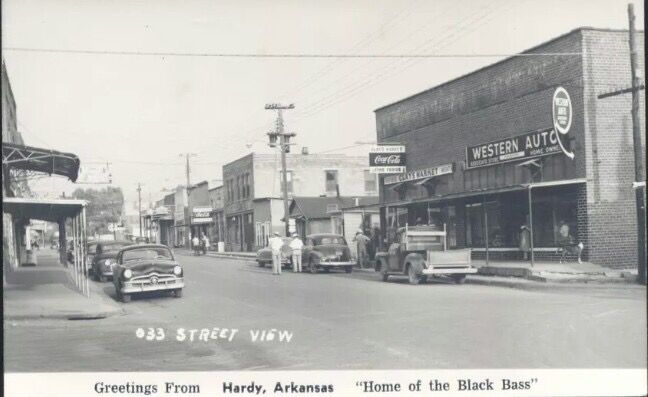
Just down the street from the courthouse was the town barbershop. Inside, was barber Lloyd “Peavine” Clouse. Mr. Clouse held a second job; He served as City Marshal of Hardy. While he paid attention to the grooming of his customers, he also kept an eye on Main Street, and the goings on, along it.
Around the noon hour, he saw a black 1951 Oldsmobile pull up and park in front of Jackson’s Hardware. The car had two men in it. They got out carrying a shotgun and went into the store.
Seeing a shotgun on the streets of Hardy was not something that would cause alarm, but there was something about the fellows that caused the Marshal to go on alert. He strolled down to the courthouse and shared his unease with Sheriff Goodwin. The two officers decided they should check the pair out. The two men were at the counter trying to sell the shotgun to Aubrey and Marshall Jackson, the proprietors. Sheriff Goodwin asked the men to step outside so they could talk for a bit.
A desperate fight
When they arrived at the suspect’s vehicle, the Sheriff was talking to J. W. Johnson, 22, and Marshal Clouse was interviewing Robert Johnson, 29. Sheriff Goodwin then began to open the car, and as he did so, Robert Johnson pulled out a German Luger, pointed it at the officers, and ordered them to get in the car, saying they were going for a ride.
Johnson’s attention was distracted for a moment, and the Sheriff took the opportunity to grab for the pistol. When he did, Johnson pulled the trigger and the bullet narrowly missed striking the Sheriff in the head—the bullet traveled through the crown of his hat, scorching his hair.
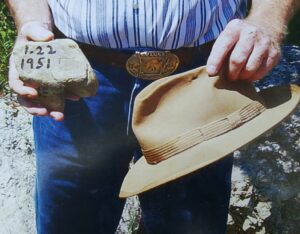
Sheriff Goodwin got his hand on the pistol once more, and another round was triggered by Johnson, this one going through the window of the hardware store. Sheriff Goodwin and Johnson, both hanging onto the Luger, went down in the street, fighting for control of the weapon. As they rolled in the road, Goodwin spotted a good-sized rock, which he grabbed and hit Johnson in the head with. That ended the fight with Johnson.
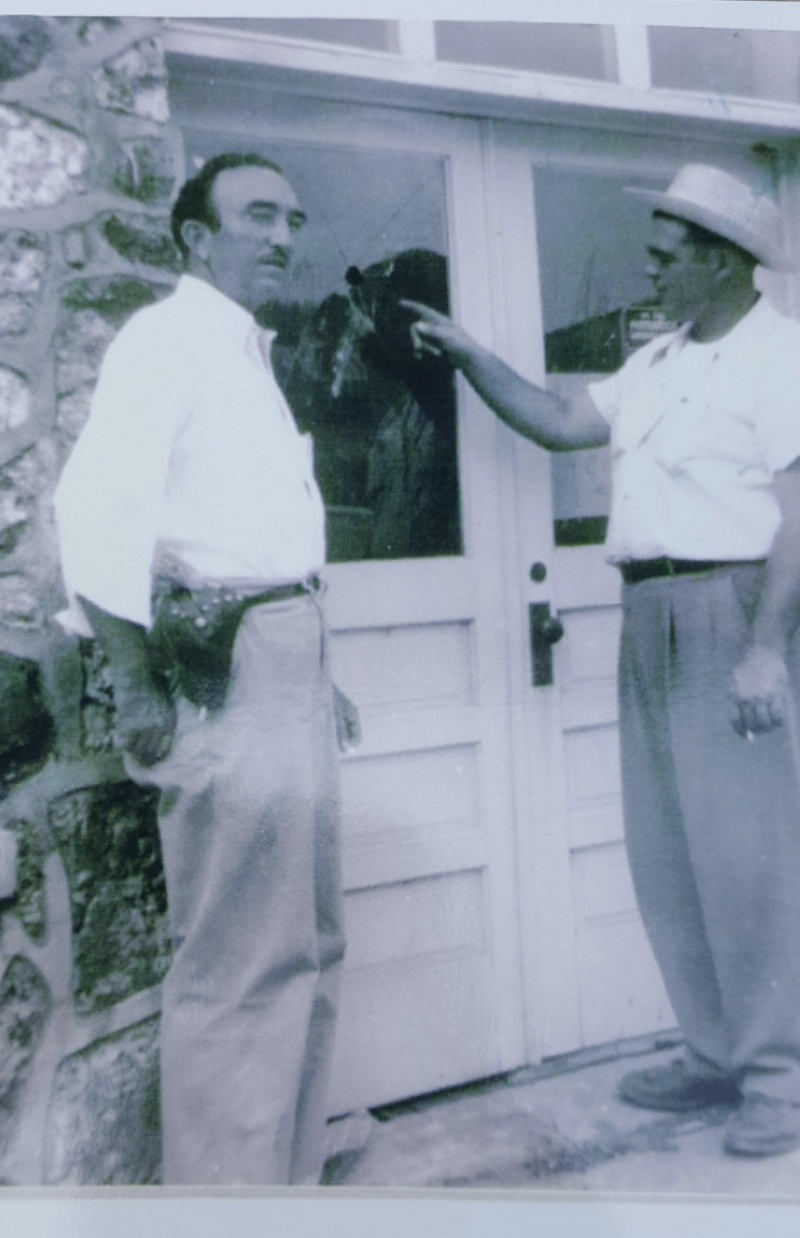
In the meantime, Marshal Clouse had his own problems with the younger Johnson. The two had engaged in gun fight, with Marshal Clouse eventually wounding Johnson with a Smith & Wesson .44 Special that is thought to have been a Third Model Hand Ejector.
Proprietor Marshall Jackson, armed with a handgun, came out of the hardware store to assist the officers. The three Hardy men then moved the two subjects to the jail behind the courthouse, and locked them up.
Short Manhunt
Marshal Clouse thought there were two others in the party, based on information given to him by a citizen. As the officers began looking for them, Clouse found them coming out of an alley, onto Main Street. He put them both on the ground at gunpoint until they could be cuffed. They were Marvin Johnson (Officer Sides’ killer), 21, and Bill Pomeroy, 19.
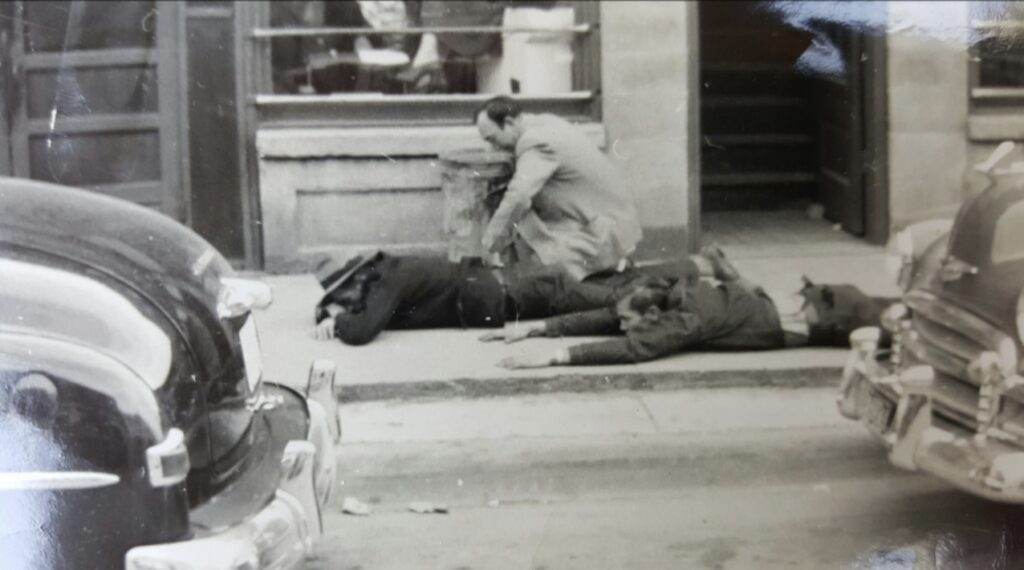
Sheriff Goodwin and Marshal Clouse searched the vehicle, and found several firearms and ammunition that were taken in the burglary of a hardware store in Durant, Oklahoma.
Wheels of Justice
Arkansas State Troopers Add Shug and Dick Wirt arrived in Hardy, and they, along with Goodwin and Clouse, took the prisoners to a more secure jail at Jonesboro, Arkansas. There, they found out that Dallas P.D. was looking for four individuals in a black Olds who shot two D.P.D. officers, killing one, and wounding the other.
The prisoners told the officers they were a Hillbilly band from California looking for a fiddler. They waived extradition and were taken back to Texas.
Robert Lee Johnson and Marvin Eugene Johnson were electrocuted for the murder of Johnny Sides. J.W. Johnson and Bill Pomeroy were sentenced to 99 years in prison.
Hearty Thanks
The State of Texas and the Dallas Police Department showed their appreciation for the two Arkansas officers in very classy style.
Clouse, Goodwin, and their wives were brought to Dallas and honored at the Dallas Police Awards Banquet on February 13, 1951, with more than 800 in attendance. The Arkansas visitors were guests in one of the best hotels, and were given the Keys to the City. During the event, the Dallas Police Chief, Carl F. Hansson, bestowed a new nickname on Sheriff Goodwin, announcing that he would forever more be known as “Rocky.”
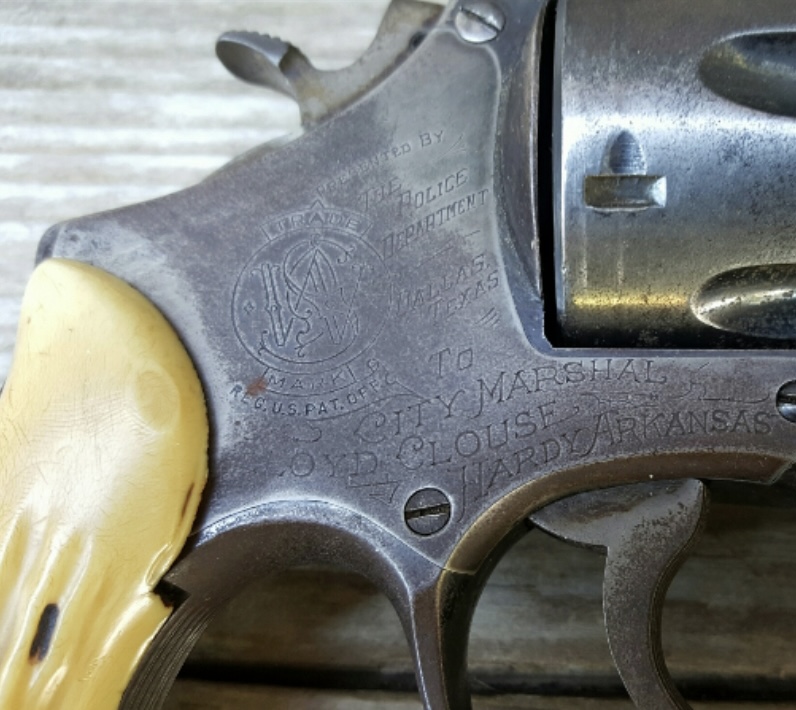
Sheriff Goodwin and City Marshal Clouse were presented with Smith & Wesson .357 Magnums (pre-Model 27s, with 3.5-inch barrels). Marshal Clouse’s gun was engraved, “Presented by the POLICE DEPARTMENT of DALLAS, TEXAS — To CITY MARSHAL LLOYD CLOUSE of HARDY, ARKANSAS,” and Sheriff Goodwin’s gun was similarly engraved, with his title and name. They were also given cowboy hats and tickets to the Cotton Bowl. Sheriff Bill Decker, of Dallas County, commissioned them as Deputy Sheriffs.
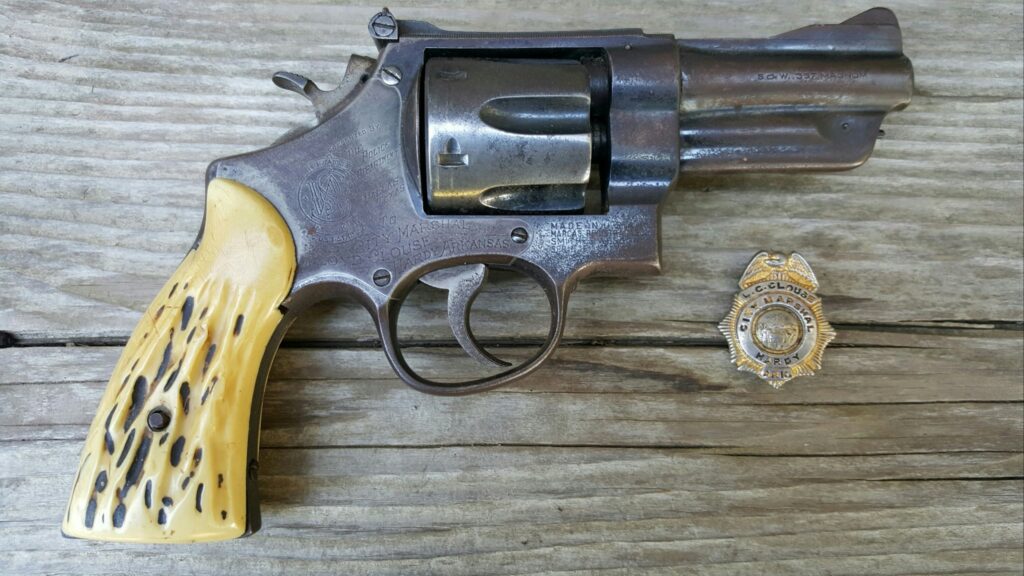
Not to be outdone, the Arkansas Legislature introduced a bill to supply Sheriff Goodwin with a 6-month supply of rocks (rocks are pretty cheap in the Ozarks)!
Postscript
Years later, while showing me his father’s Smith & Wesson, Marshal Clouse’s son pointed out a crack in the frame. Since it was unusual to bust an N-frame, I had to ask how it happened. He said his brother became interested in reloading a long time ago and one day he over did it.
Lessons
The story provides a host of lessons for us RevolverGuys, including, but not limited to, the following:
-
-
In law enforcement, there are no routine stops. You have no idea who the suspect is, or what he did prior to your contact with him. Any encounter with a suspect can quickly become violent. Armed citizens should exercise similar caution when interacting with unknown individuals in public, as they frequently cross paths with the same criminals;
-
If you carry a firearm for protection, as a job requirement or for personal use, always remember that each encounter is an armed encounter, because you brought a gun to the fight;
-
Training and practice are vital for those who carry a firearm in defense of self and others;
-
Responsibly armed citizens sometimes need to assist law enforcement officers, as storekeeper Marshall Jackson did. This can be a very dangerous situation, however, and there’s a great risk that a good Samaritan could be mistaken for another criminal. Great caution and good tactics are advised in these circumstances;
-
Keep fighting! Trooper Grisham survived a neck wound, and Officer Dawson survived two gunshot injuries. Even though Officer Sides would eventually die from his wounds, he still managed to draw his gun and fire at the suspects after he was hit. He probably saved his wounded partner’s life in doing so, by scaring off the attackers before they murdered him. Your mindset and will to win are critical to your survival;
-
Pray it never happens to you, and avoid it if possible, but if you find yourself embroiled in a life or death struggle, never discount an improvised weapon, as Sheriff Goodwin did.
-
Stay safe out there and never forget those who gave their lives for others.
*****
REFERENCES:
For a video about this incident, containing interviews with the sons of Sheriff Goodwin and Marshal Clouse, please visit the Hardy History Association website, and look for the February 2023 video titled, “Hardy Shootout.”
endNotes:
-
I attempted to find out what revolver Trooper Grisham was carrying, but was unable to narrow it down beyond the simple description of a .357 Magnum. In May of 1938, Smith & Wesson shipped 54 units of their new and extraordinary Registered Magnum to the Mississippi Highway Patrol. These revolvers were in a five-inch barrel configuration, and were fitted with Baughman ramp front sights, so-named for Special Agent Frank Baughman of the FBI, who was an early firearms instructor, and the creator of this sight design. It is very possible that Trooper Grisham was armed with one of these revolvers.

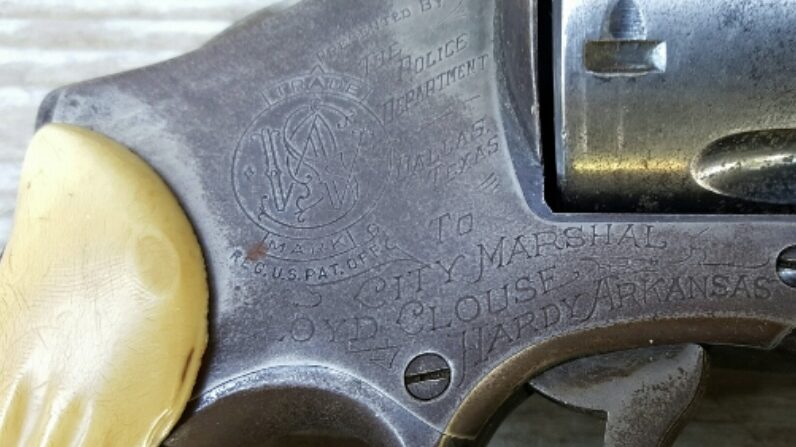
Thank you, Tony, for this informative read on these lawmen of old. The lessons learned here are as valid today as they were then. I found it especially gratifying to see how the Dallas Police Department recognized and honored these Arkansas Officers for their work. That made me swell up with pride for how the peace officer community takes care of their own, regardless of jurisdiction. It’s also nice to see that DPD still honors Officer Sides’ sacrifice with the award for the best rookie in his name. Great article, Tony- thank you again.
I second what Kevin said, great article Tony. Just a thought, revolved related or not, how about a write up on the top ten FBI fugitive you caught?
Sounds like Tony is holding out on us, Matt. His cover is blown, now!
Exactly, get on it Mike!
Today’s anti-police activists might find histories of similar heroic law enforcement encounters with bad guys informative in that they far outweigh the current biased media reports that focus on a few bad cops. But maybe not.
By the way, thank you for a very well-written, concise article, one that transported me back to an America that’s long gone. And the “lessons” at the end of the story are well worth keeping in mind for anyone who legally carries a firearm.
Man, a 3.5” Model 27 (or a pre 1957 Model 27) is a thing of beauty. I’ve always loved 3.5” and 5” N Frames.
Oh, and thanks for the great article.
I can imagine a Ideal 429421 coming out of the muzzle of that .44 Special
Great article Tony! Keep em coming.
Tony, you’re writing about an America that we need to get back.
They can keep their electronic gadgets, fast food, and freeways. I prefer the age when Good Men who stopped Evil Men were valued and celebrated; A time when the town barber had a badge, a sixgun, and the will to use it, and everyone thought that was the way it was supposed to be.
Like Kevin, it warmed my heart to see how the men in Dallas took care of their brothers from Arkansas. I have a hard time imagining that kind of thing happening today, but it makes me happy to read about a time when we had such clarity.
Wonderful work! I look forward to your next (and some more info about the story RetDet is teasing us with), and appreciate you sharing your talents with us, here.
I second that notion 100% !! There was a time when the LEO was held in high esteem, and had the support of everyone in the community (except the bad guys, of course). When I was a kid in the late 50’s, early 60’s you would never think of back talking or flipping the bird at any LEO over anything. No so much today.
Over the last 25 years, there has been a gradual militarization of police. Departments in my area went from traditional police uniforms to para-military battle dress with load bearing vests decked out for a remake of the Battle of Stalingrad – fine for a SWAT team, but for interacting with the public – gotta wonder.
Factor in the internal ‘us-vs-them’ mindset, ( which IAD never helped ) and you have a formula that has contributed to the deteriorating public image that I saw festering over the last decade before I hung it up. Glad I’m not a young ‘un on the job today !!!
Mike,
I appreciate the kind words posted by everyone and am glad that others enjoy the stories of days gone by of folks who used revolvers. As long as their names are spoken or read about then they live on.
Might be best if you, Matt and I gather over a cup of coffee and do that story verbally😄. Rest assured there is nothing I did that rises to the level these brave Officers, just being awake, alert and in the right place at the right time.
Good Lord willing we will see if we can crank out some more of “The Day that…………” stories. There are a lot of them.
Stay safe Friends,we live in terribly strange and dangerous times.
Excellent article Sir, thank you! Sobering reading. The tactics we use today seem different for good reason, and are facilitated by the portable radio I think. Makes me wonder in the first part, did the trooper have a radio in his cruiser? We certainly wouldn’t have an arrestee drive a vehicle to the police station today!
Thanks for sharing and preserving a part of history. I would also like to hear the story behind the FBI commendation! Take care.
Janice Davis
This article was well-written and an extremely interesting read. I would thoroughly enjoy seeing many more like it.
Thank you Sir! We’ve got another one from Mr. Perrin in the hopper, so stay tuned!
I’m personal friends with Marshall Clouse’s great grandson whom looks identical to him … and his great grandsons just as great as his great grandfather . Thank you for sharing this story that I’ve only heard from his great grandson ..
Tony, thank you for another excellent article, but especially for the pictures and articles! The sacrifices and stories of these men are even more profound and personal when you have a visual reminder of who they were.
By the way, the Hardy website videos weren’t available.
Mike, the links looked like they worked for me. If you click the “Hardy Shootout” hyperlink in the References section, it will take you to a webpage that will let you select the video—just click the green tab that says “Feb 2023 – Hardy Shootout”
Mike thank you for the kind comments. I agree with you it sure helps my enjoyment and understanding if visuals are present.
God bless you and yours Sir.
Hello, my name is Tammie (Johnson) . I am the granddaughter of Robert Lee Johnson. I am sorry for heartache he has caused. I never knew him. He died before I was born. It’s nice to know that they honor Officer Sides every year with the “Rookie of the Year award.”
GOD BLESS,
Tammie
Thanks for checking in, ma’am. That cross is certainly not yours to bear! We all join you in praying for the Sides family and all those affected by his murder. God Bless!
I was born and raised in Hardy and was about 4 when this happened. I recall my mom and dad talking about it and we knew Pevine Clouse very will and his family. He remained Marshall here for many years. Guthrie Goodwin was also one I knew well although he was from nearby Ash Flat and was Sheriff only a short time, he later worked for the State Highway Patrol and was a warden at a state Prison. His son, Fred, is my age, and we graduated from High School together. He loves to tell this story about his dad and Guthrie was quite a character. I have heard stories from my mom, who was a kid in the depression, about gangsters from Kansas City coming to Hardy to hide out as it is a remote wooded area and was especially so back in those days. It was wide open with a lot of bars and dance halls and was also a resort area from folks from Memphis. I still live in this area, as it is one of the most beautiful places on earth.